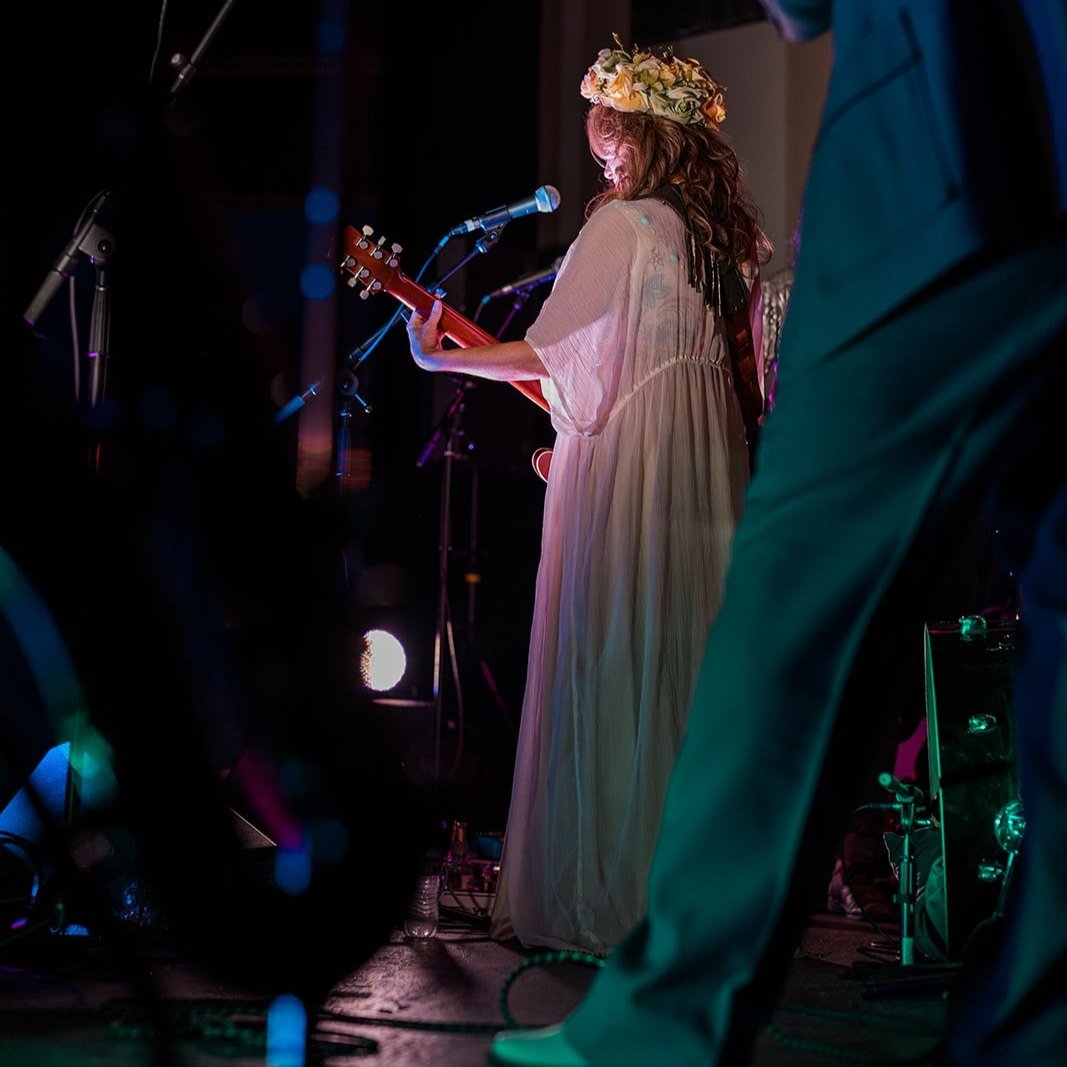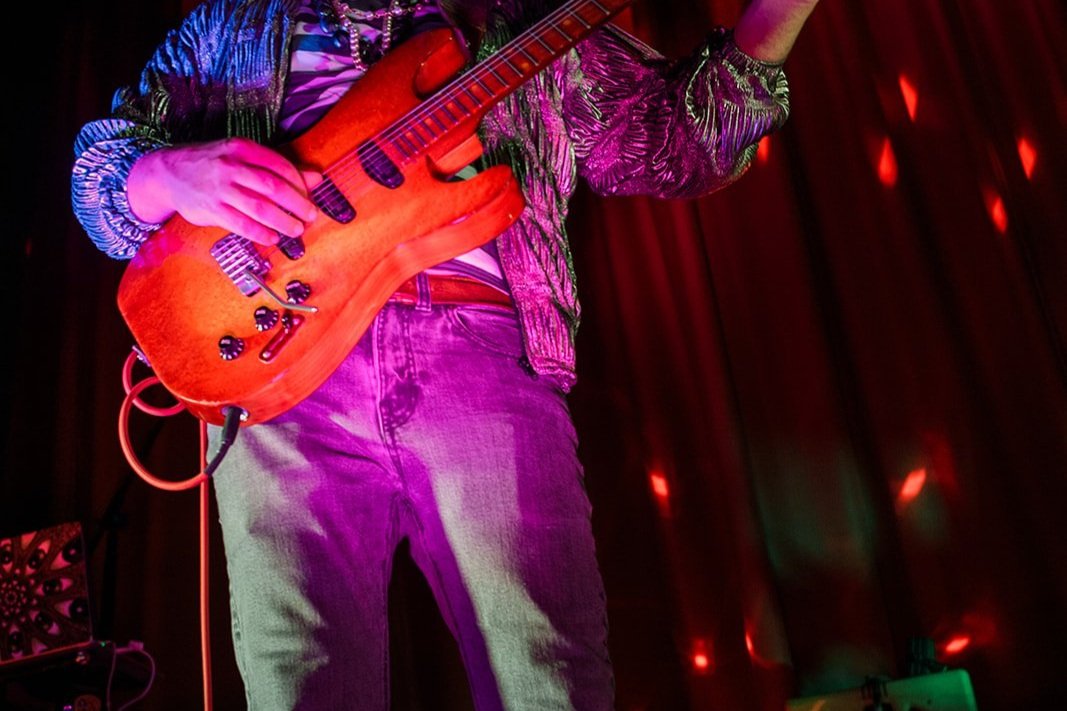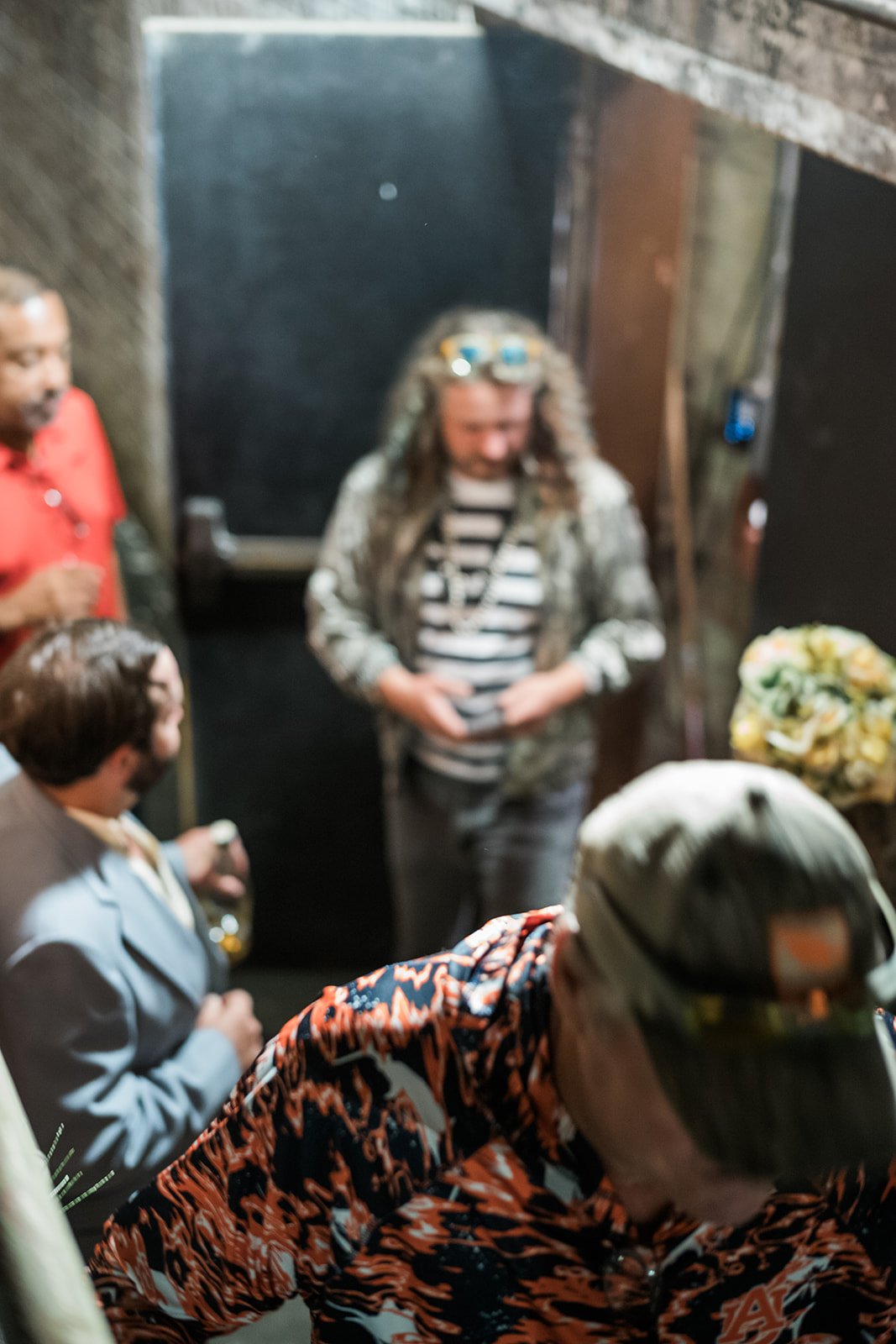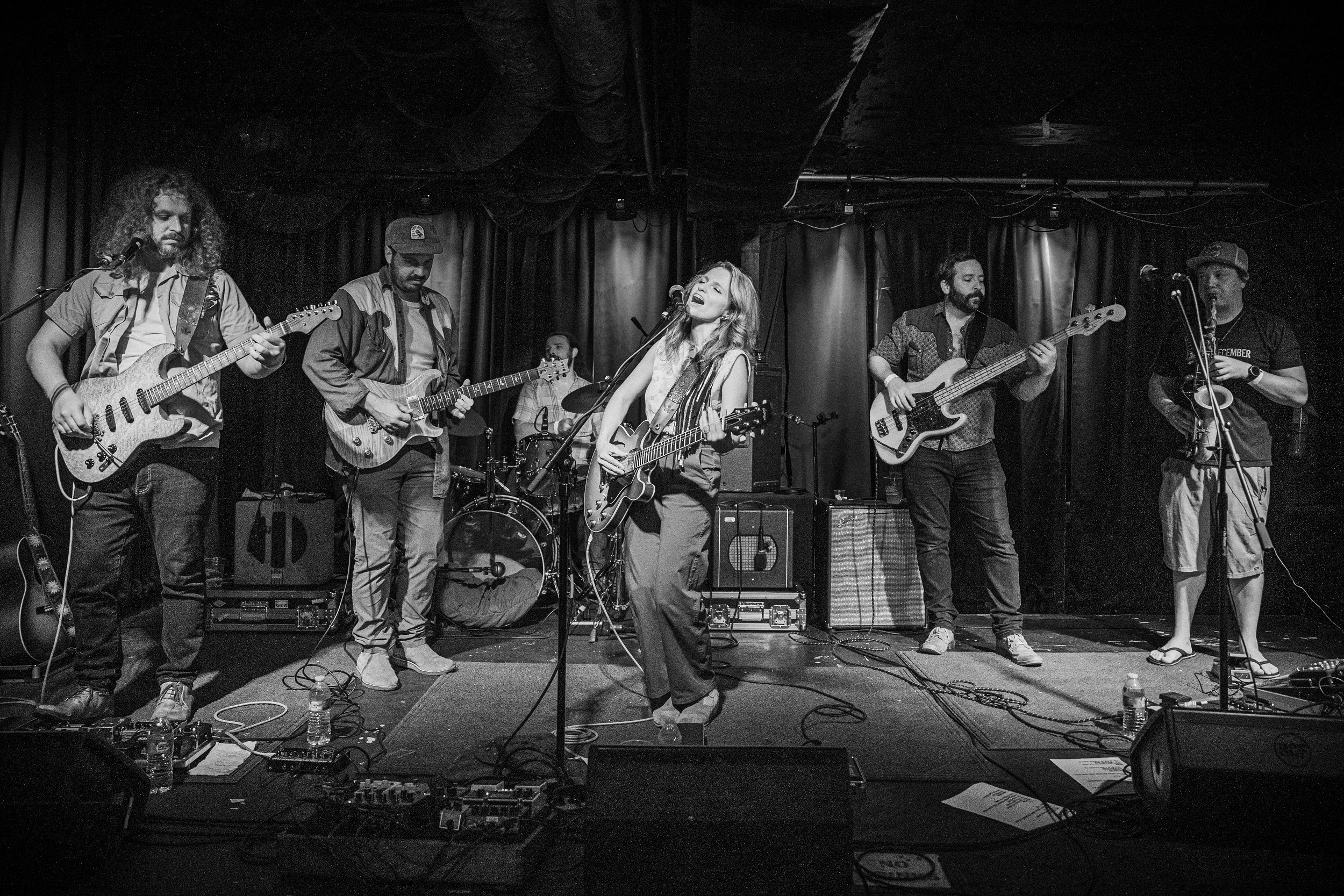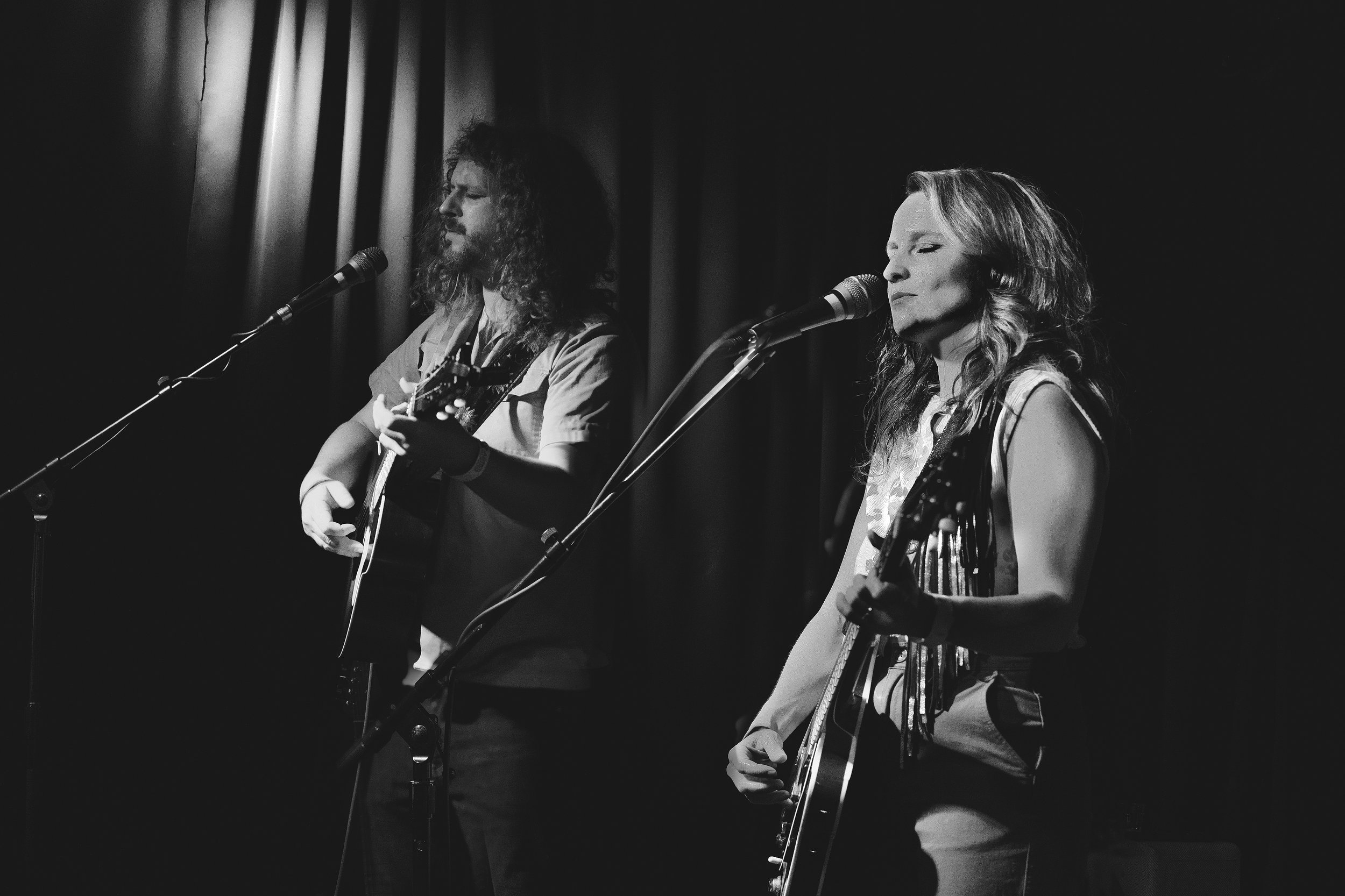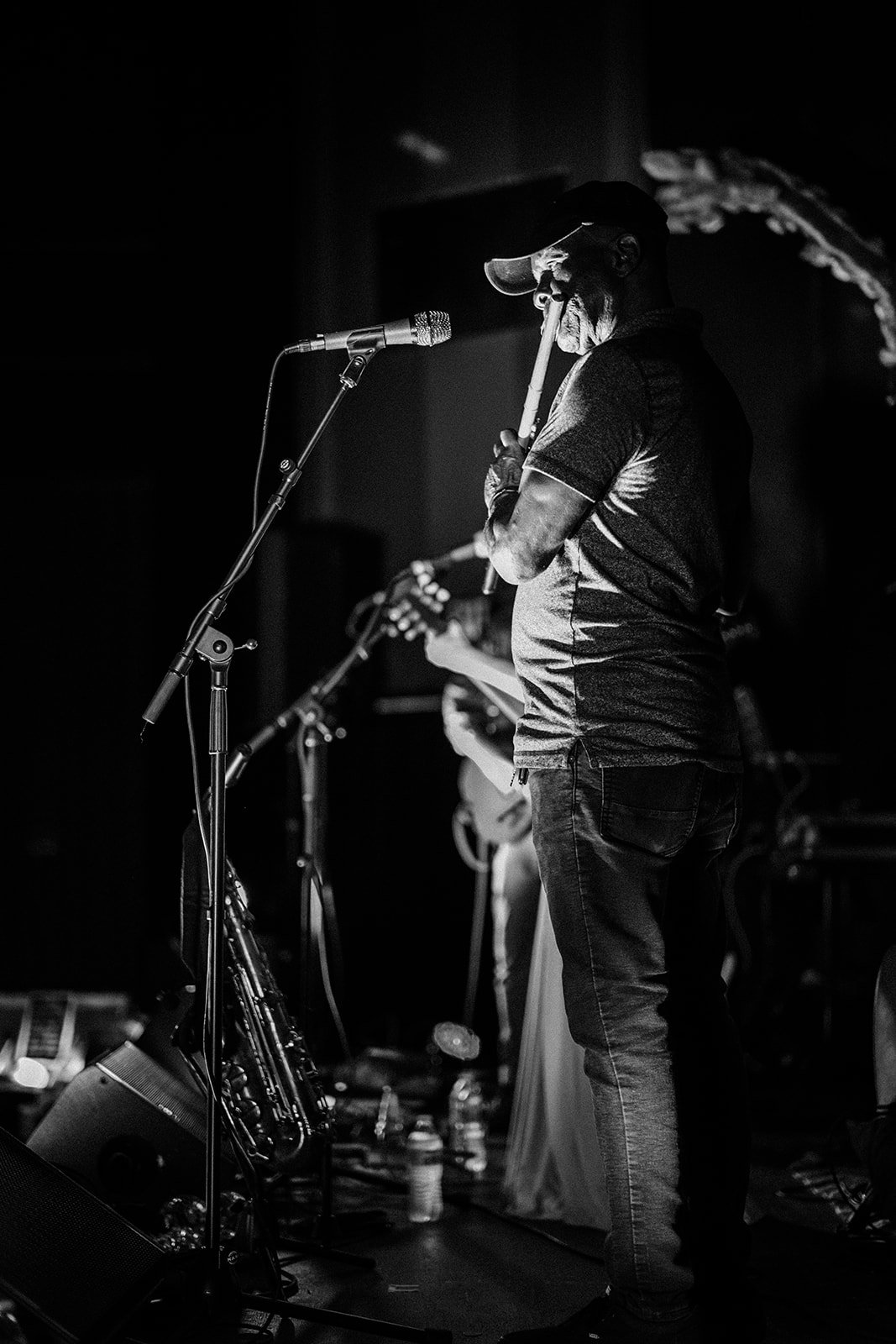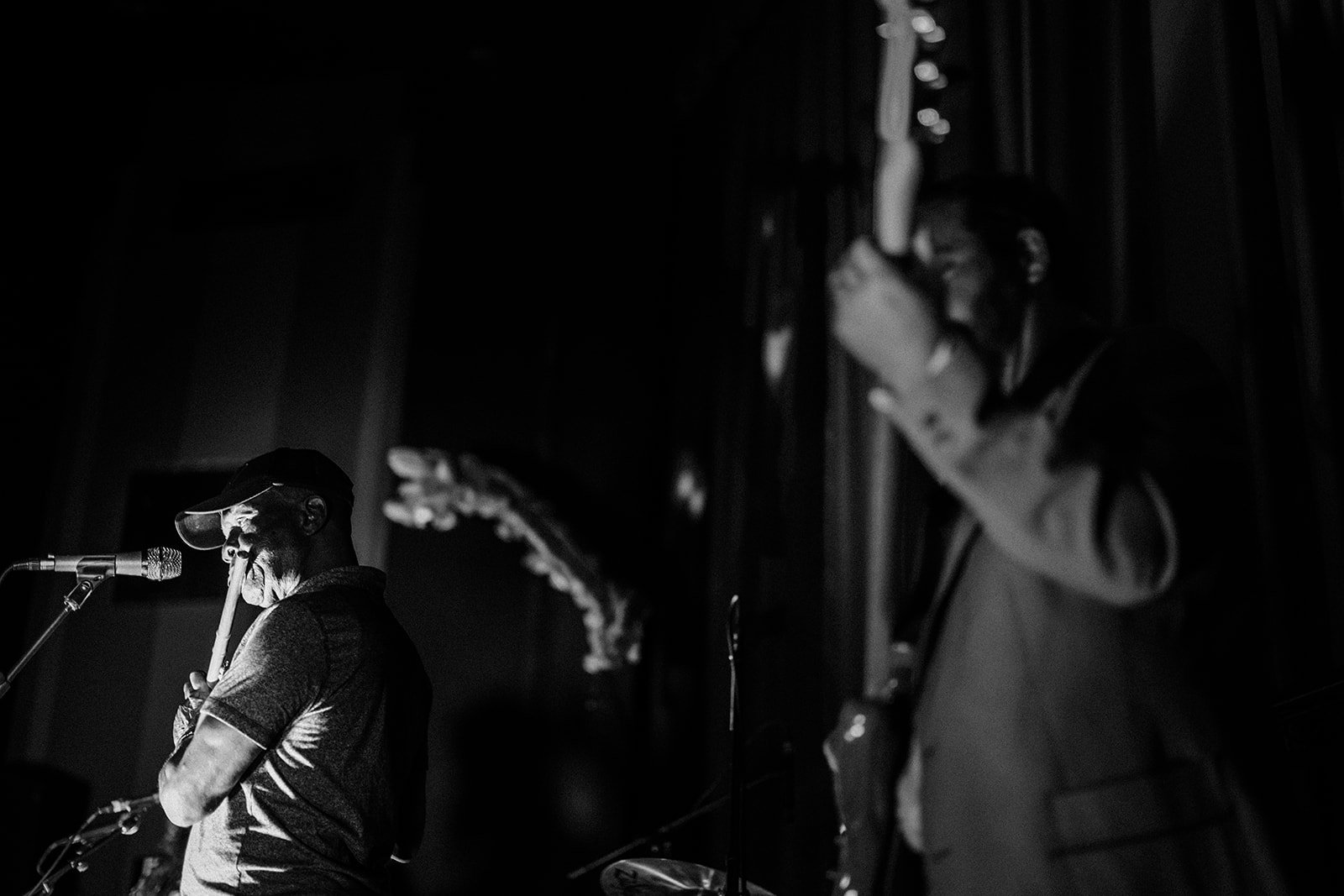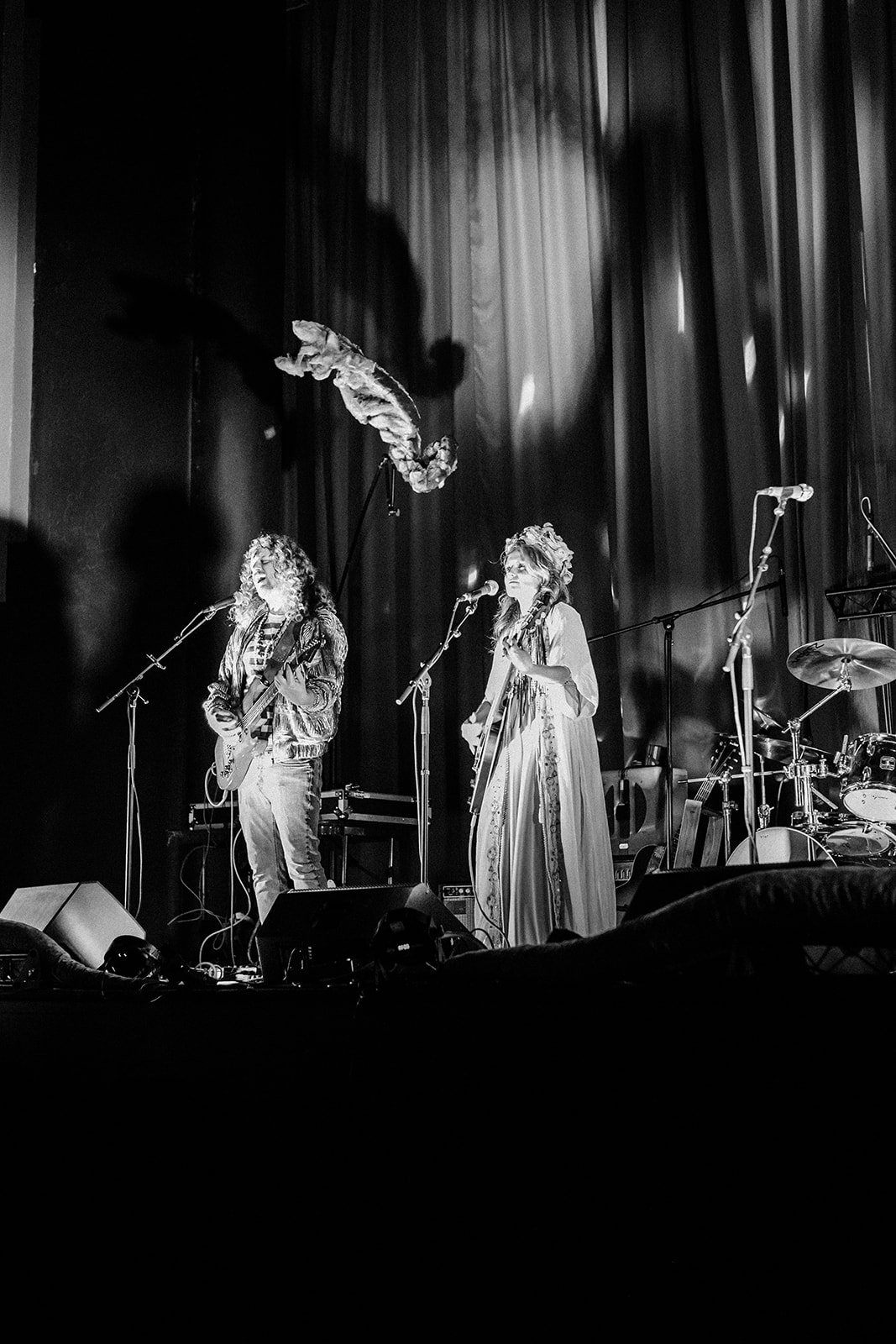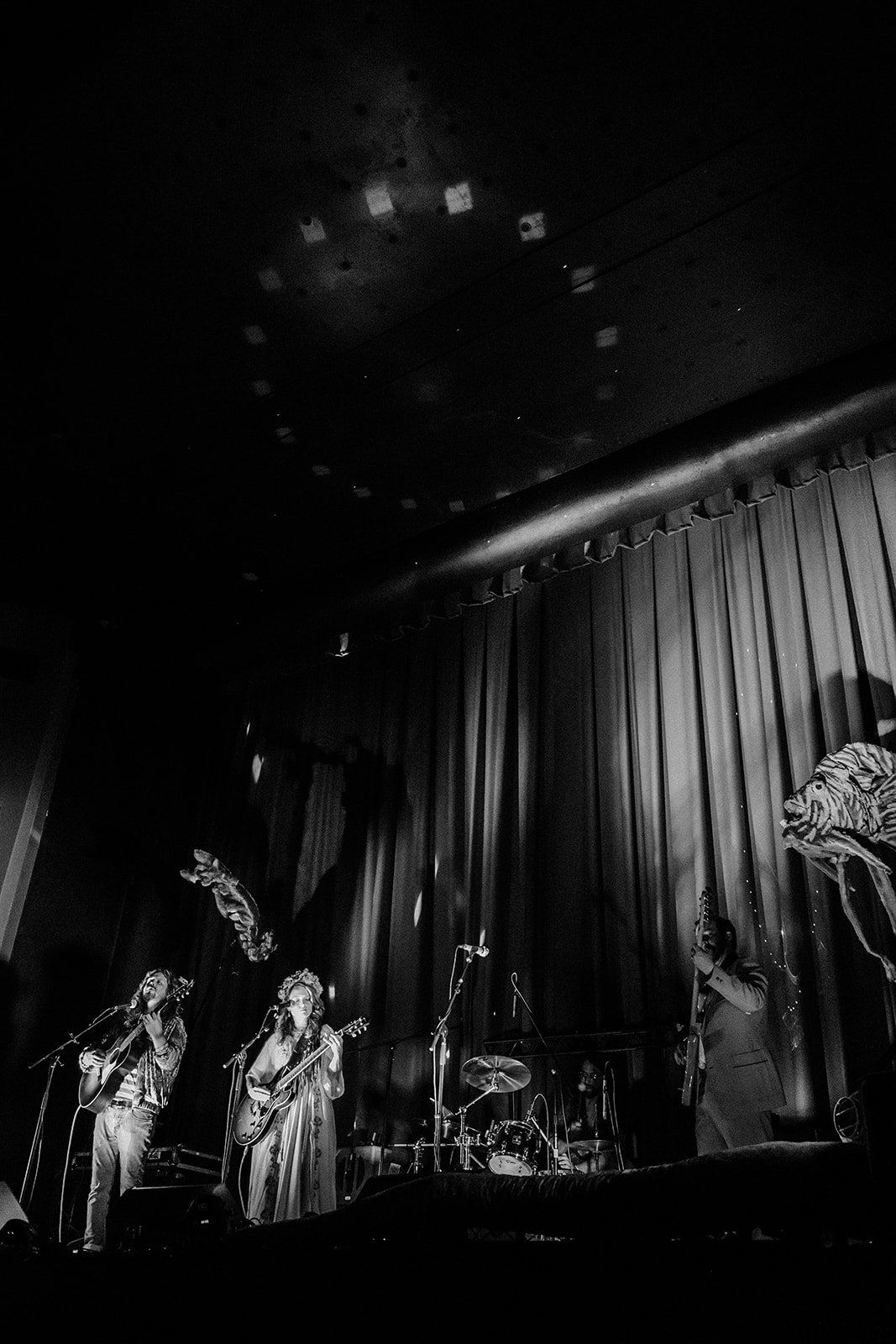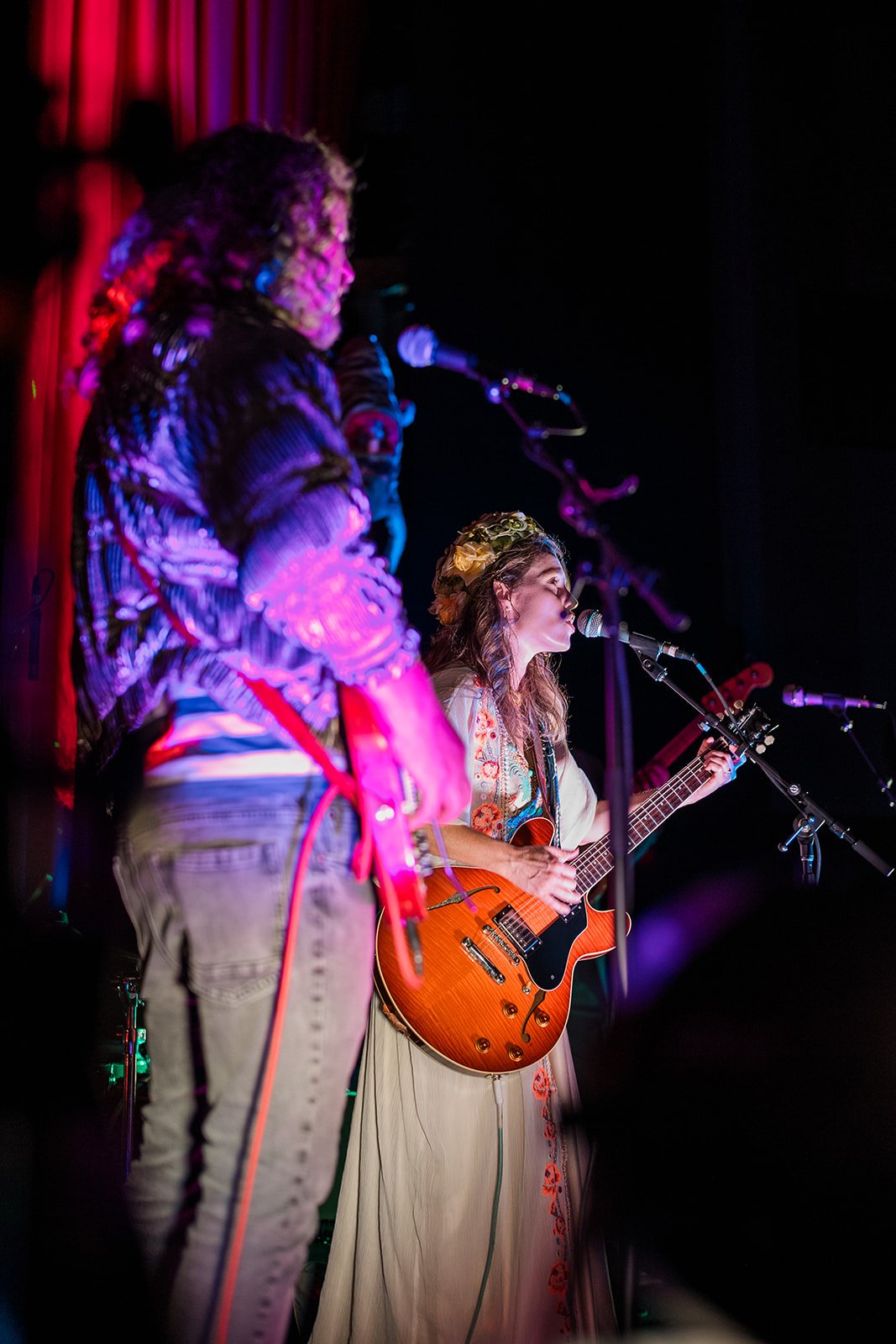FRESH NEWS!!!
Excited to be featured in the latest Relix Artist Sampler, from the July/August 2024 issue! Check it out at relix.com/playlist!
About the Band
Space Folk Explorers
Electric Blue Yonder (EBY) researches the human condition and reports its findings through harmonious song. Exploring what it means to be human while discovering the mysteries of the universe, the intrepid band of Space Folk seeks to find others of their kind. Human. Kind. Described as “Real American Space Folk,” the band draws its inspiration from the psychedelic folk, surf, and cosmic country rock of the 60s and the Space Age prog/art rock explorations of David Bowie and Pink Floyd, all while shifting time to the early roots and parlour style guitar of the 20th century. The result is a genre-bending mix that captures a nostalgic familiarity while simultaneously transporting you into uncharted territory.
Origins
The band includes founders Beth and Johnny Veres, who provide vocals and guitar, Russell Thomas Bush on bass, and Andrew Mohny on drums. Beth met Johnny while back home for a summer between college and grad school and began playing in a reincarnated version of HellaKopta of Love (HOL), a progressive rock instrumental band from his days at Auburn University. They started writing songs inspired by roots music and harmony-driven vocals that outgrew the youthful experimentalism of HOL and retired from public performance for several years to incubate their newfound passion. In December 2015, Beth and Johnny were married. By spring 2016, they began performing as Blue Yonder, working on orchestral arrangements for their songs. In early 2017, Johnny asked Russell Thomas Bush, a friend and former bandmate of Beth from her Tuscaloosa days playing in the band Squirrelhouse, to join them. Shortly after, they recorded their first EP, Born of the Sky, in their historic home with the help of Technical Earth Recorder’s Robert Shimp. After Colorado and East Coast runs touring the EP, Blue Yonder added “Electric” to their name for the filming of an episode of the Zimmern List at Saw’s Juke Joint in 2018, augmenting their sound with vital vibrations.
Between Space & Time
EBY debuted Between Space and Time (B/TST) on February 29, 2020, just two weeks before the pandemic shutdowns. As an anthology, B/TST includes some of their earliest works interspersed with the ‘vital vibrations’ of what’s to come, thematically centered on the relationships between people as they bump and collide through the Large Hadron Collider of Life. Their songwriting shines through with earnest lyrics and a powerful delivery through their unique harmonies. Ranging from the weird country of “Brand New Day” and traces of gypsy jazz in “Actions” to the sonically dark musings on mortality in “Epitaph” and the grooving portrait of cosmic love on “Your Light”, the songs of Between Space and Time shine like the stars of a newly, emerging constellation. At the core of the album, the band hits their stride with laid-back rocker “Schtick Shift”, the spacious, Grateful Dead-esque “Bluster”, and the boot-stomping storm of “Thunder Train.”
Mourning Sounds
If B/TST’s effort represented a collection of songs, then Mourning Sounds is a complete thought, according to Johnny, a classic-rock fan of Pink Floyd’s The Wall and The Beatles’ Revolver, with the title an homage to Brian Wilson’s iconic Pet Sounds and Smile albums. The “Perfect” Suite, which closes the new record with a three-song medley, evokes the band’s old-timey parlor style guitar-picking with the lush changes of “Heroes & Villains” alongside some brass riffing right out of Van Morrison.
Johnny explains Mourning Sounds “is about loss and grieving... It can be personal, but also about all the things we’ve lost along the way this past year. We had no choice during lockdown but to look at where we’ve been and where we’re going. The album title started as Morning Sounds, but quickly evolved as the pandemic raged on. We’re not just mourning loved ones we’ve lost, but the society we used to have.”
He describes the 11 songs as “a narrative exploring the emotional states of being created by trauma, and specifically grief illustrated through oceanic metaphors.”
Recorded with engineer and Bay Area transplant Robert Shimp at his Technical Earth Recorders, located just a block from John and Beth’s home in downtown Montgomery, AL – which Veres has helped revitalize with his interest in urban planning – Mourning Sounds features cameos from Karita Law, with a yowling take on the Stones-y rocker “Lost at Sea” (under her stage name Rhetta Simone, she has been a back-up singer for Brittany Howard, Prince, Robert Glasper and Jon Batiste).
Mourning Sounds form a shimmering meditation on dreams and mortality, a baroque chamber rock narrative in which water forms a leitmotif, both destructive and life-affirming – specifically its bottomless depths and the ability to keep one’s head above it – which can be heard in the “Gimme Shelter” plaint of “Lost at Sea,” the “Surf’s Up” harmonies of “Escaping the Foam” and the transcendent wordless chant of the climactic, and cathartic, “Rising Tides.” Songs like the pastoral “Lonely Child” eye close friends suffering from mental health issues, while “A Thousand Years of Silence” is about “Sitting on the bottom of the ocean/Staring out into the blue/I can still hear the last thing you said to me/Echoing through the open sea.”
On another level, Mourning Sounds offers an intimate conversation between Johnny and Beth, who christened the band’s original Blue Yonder name from sharing relatives who were in the U.S. Air Force, then added the Electric after getting married two years ago. By the end of the album, it’s like waking up to a brand-new day.
“Step by step mile by mile and day by day/You can plan for tomorrow but you gotta live for today.” “Rising Tides”
“EBY is a diamond-bright exploration of rock’s past, present, and hopeful future. As saviors of the genre go, they make a powerful argument that theirs is one of the few revolutions left worth signing up for…”
“…a meditative mashup of trippy folk-rock psychedelia, cut with a raw, Alabama flavor befitting their roots. Captivating harmony vocals and skilled, almost Nick Drake-like guitar fills complete the picture.”




